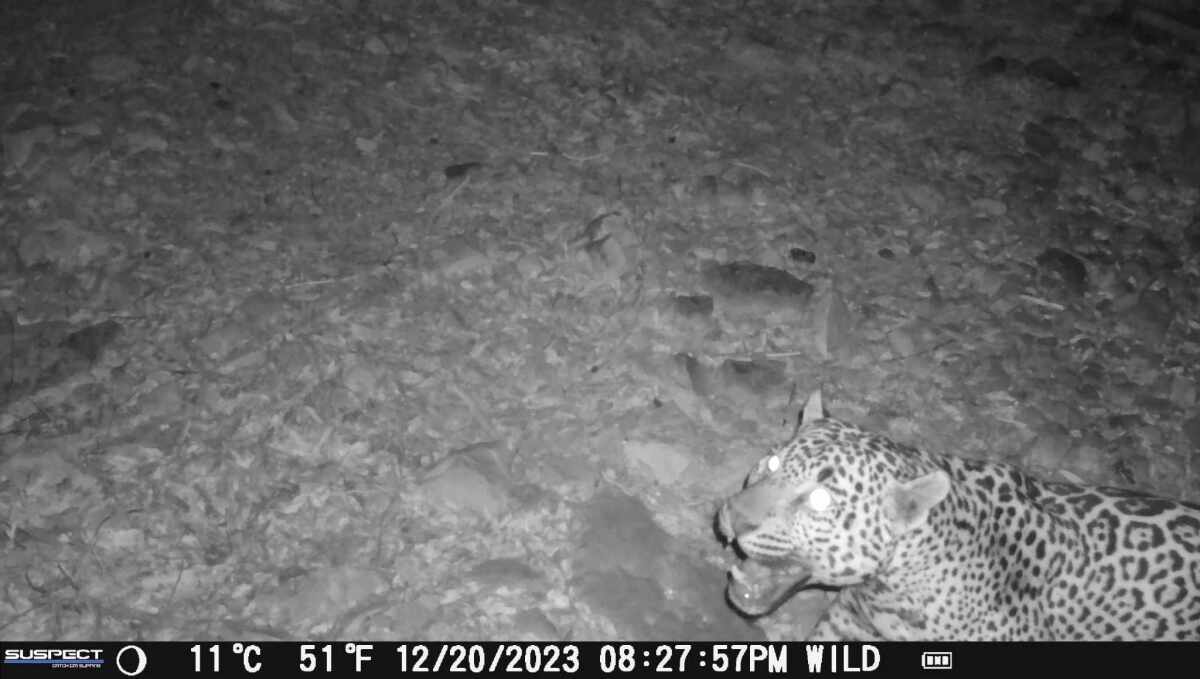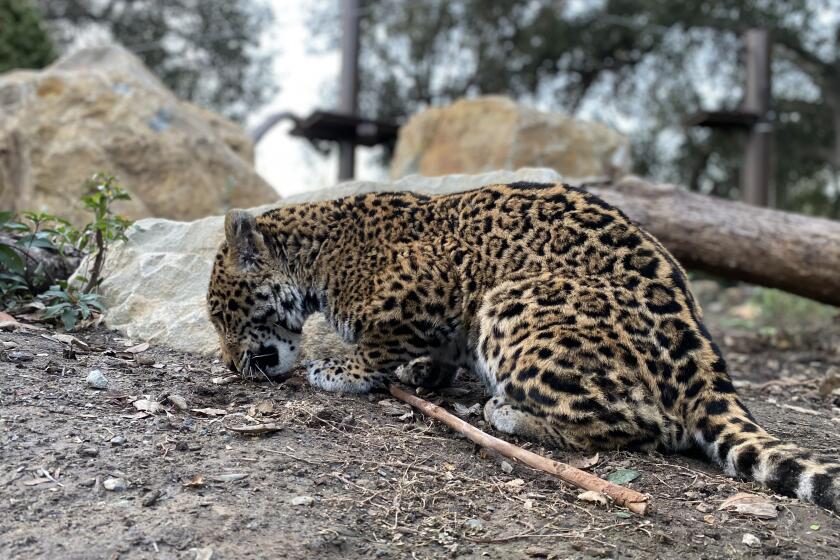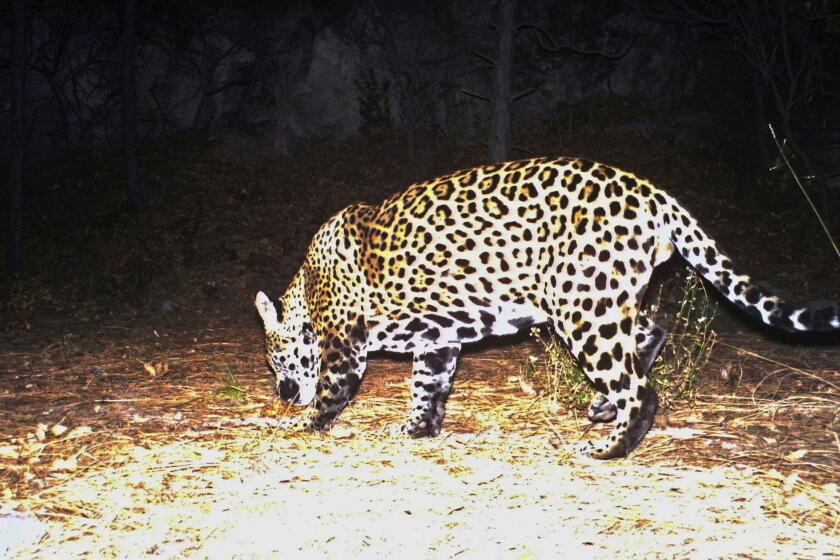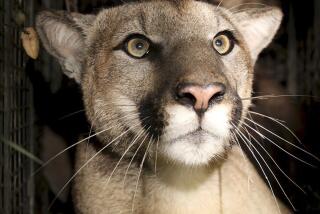Rare jaguar — ‘holy grail’ of big cats — spotted in southern Arizona

For several days last month, a variety of wild Arizona critters were recorded by photographer Jason Miller via stashed-away trail cameras.
On Dec. 11, video recorders captured a mountain lion sniffing around, followed on Dec. 14 by a foraging mama bear and cub, two javelinas on Dec. 18 and, the next day, a sad-eyed ringtail cat. They were all recorded by a pair of cameras left in a rocky, forested area in southern Arizona next to the Mexican border.
The footage was “stunning but routine” for Miller, 54, a native of nearby Vail, Ariz., whose day job is working as a landscaper.
His most recent finds, however, were thrilling.
Miller admitted he “gasped” when he saw what he described as the elusive “holy grail” of big cats — a jaguar — roaming around about six feet away from his camera the night of Dec. 20.
It was about 8:30 p.m. when the spotted beast appeared and stopped to sniff at mountain lion scat before opening its jaw. The jaguar showed off its canines to the camera as the light reflected off its glowing eyes.
“That meant everything to me,” Miller said of the find. “I’ve been running cameras for just over five years in southern Arizona and in the deserts hoping maybe one day I’d find a jaguar. It finally happened.”
Miller’s video showed a jaguar in the Huachuca Mountains south of Tucson, wildlife biologists with the Arizona Game and Fish Department confirmed Monday.
Game and Fish also concluded that the jaguar was not previously photographed or filmed.
Miller’s find was more than breathtaking; it was rare.
The O.C. Zoo, in Orange, debuted its 11-month-old, 50-pound jaguar named Mickey earlier this week after the facility received the big cat about a month ago.
Mark Hart, Arizona Game and Fish’s public information officer based out of Tucson, said the discovery marked the eighth individual jaguar spotted in the wild in the United States since the 1990s.
“On average historically, there are three to five jaguars in this state every 10 years, for the past 100 years,” Hart said.
One of the last jaguars to capture Arizonans’ imagination was “El Jefe,” last spotted near Tucson in 2022, according to AZCentral. Another, named Sombra, was also spotted in Arizona’s Chiricahua Mountains later that year.
“There was a lot of press and attention for ‘El Jefe’ and concern when he went missing,” Hart said.
The cat was first seen in 2011 and was regularly spotted up until 2015, when Hart said the animal disappeared.
The 2022 sighting “relieved many of his fans,” Hart said. “El Jefe” is believed to have returned to the state of Sonora in northern Mexico, according to Hart.
Though the gender and age of Miller’s jaguar are unknown, Hart believes the creature is male.
“So far, every recent jaguar sighting has been a male,” he said. “The last documented female in the wild goes back to the ’40s.”
An environmental group wants to reintroduce the jaguar to the Southwest, where it once ranged for hundreds of thousands of years.
The presence of Miller’s cat fits a migratory pattern in Arizona, according to Hart.
He said a popular theory floated by jaguar experts is that the cats who show up in Arizona are from a breeding population in Sonora that have been driven out by other males.
“They’ve got everything they need here in terms of food and space,” he said, “just not females, so they eventually leave.”
Jaguars were once plentiful in the American Southwest but were driven out by hunters, particularly predator control agents in Arizona as the state grew, Hart said.
Hart noted that Miller’s find also highlighted the usefulness of photographic equipment.
“The first five jaguar sightings were all made by hunters” who observed the animals in the wild, he said. “These last three have come from trail cameras.”
Miller said he was a lifelong bowhunter, retiring only two years ago.
Now his duties include naming new critters. He christened his find “Cochise,” the county named after the famous Apache chief in which the discovery happened.
“I wanted a name that symbolized the Southwest,” Miller said, “and that was ‘Cochise.’”
More to Read
Sign up for Essential California
The most important California stories and recommendations in your inbox every morning.
You may occasionally receive promotional content from the Los Angeles Times.













